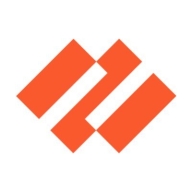


Palo Alto Networks VM-Series and Varonis Platform are key players in the cybersecurity and data access governance sectors, respectively. Palo Alto Networks VM-Series has the upper hand due to its advanced cloud integration capabilities and broader deployment options.
Features: Palo Alto Networks VM-Series is recognized for threat intelligence, user and application identification, and ease of deployment. It includes IDS, IPS, and centralized management via Panorama. Varonis Platform focuses on data access governance, monitoring data access activities, and preventing unauthorized data exposure.
Room for Improvement: Palo Alto Networks VM-Series needs a simplified Java-based interface, better scalability, and enhanced cloud integration. Varonis Platform should address filter setup complications, speed up its calculation engine for large datasets, and lower licensing costs to attract mid-tier companies.
Ease of Deployment and Customer Service: Palo Alto Networks VM-Series provides flexible deployment across cloud environments with strong technical support, although there can be occasional delays. Varonis Platform is mainly for on-premises deployment but offers responsive customer service. Palo Alto's cloud compatibility extends its deployment possibilities.
Pricing and ROI: Palo Alto Networks VM-Series is expensive but considered justified for its features, with a straightforward licensing process via AWS Marketplace. Varonis Platform's high licensing cost is a challenge for budget-limited firms. Both products show strong ROI with Palo Alto offering security management agility and Varonis enhancing data security and compliance.
Clients are now comfortable and not wasting productive hours on IT support.
The automation part is giving us a cost benefit and speed; we can react faster.
It's a very useful tool to mitigate and protect your enterprise.
Customers can see data within a week, indicating a quick return on investment.
I definitely say that we have had time savings by using the DataVantage module and also time savings using the AD module when we are dealing with different incidents.
They offer very accurate solutions.
The quick resolution of issues with Fortinet FortiGate is due to the support of the company and the fact that the equipment is easy to work with.
I would rate the technical support for Fortinet FortiGate a ten out of ten.
The support quality could be improved.
Resolving issues promptly.
They are responsive and provide high-quality assistance.
The customer support is above par; it is what I think other organizations should look at to be comparable to.
They respond quickly to anything we need, which is not common among platforms.
They scale up really well from smaller models like the FortiGate 40 and 50 to bigger sites with the FortiGate 100 for more throughput - up to enterprise datacenters.
The variation comes in terms of the interfaces and throughputs, but from a security perspective, you get the same benefit, irrespective of whether you have an entry-level unit or an enterprise.
We determine sizing based on multiple factors: number of users, available links, traffic types, server count, services in use, and whether services will be published.
They are easy to upgrade, and with credit licensing, they scale effectively according to demand.
The solution is scalable and can easily handle an increase in the number of users.
It is easy to use with an excellent graphical user interface and extensive documentation, which contributes to its high scalability.
Varonis's scalability as eight to eight point five out of ten.
We're experiencing 99.999% availability consistently.
I would rate the stability of Fortinet FortiGate a ten out of ten.
Currently, we are experiencing a general outage of one of the main internet service providers of the Dominican Republic, and we have not been impacted in our operations because with SD-WAN, we have another internet service provider and we are working with the second WAN connection without any disruption.
Hardware is generally very stable.
I have not experienced any major problems or downtime.
Perfection is unlikely as the dynamic nature of traffic and constant changes can result in occasional bugs despite regular updates.
Investing in a solution that can accommodate such growth would be more cost-effective than repeatedly purchasing new hardware.
While Fortinet claims to offer a comprehensive network solution, it falls short in addressing computer application issues, particularly server security.
When considering Sophos XG, which we also use, the logging and reporting functionality is notably more efficient.
Integration with CSIRT across all use levels would make it easier for administrators to stay updated on the blocked entities without manual intervention.
Most customers go for partner-enabled support, which involves multiple layers, leading to delays.
When managing the firewall, it involves a Strata Cloud web browser that requires improvement to enhance deployment ease and call center efficiency.
Varonis requires more access permissions for its core functions compared to competitors, which can be a concern for companies about data safety.
A phishing email module would be great; I look forward to when that comes out.
It would be beneficial if the reporting in Varonis Platform could use PDFs instead of Excel for better graphs.
Last year, I renewed the support for three years, which can sometimes be expensive but depends on the security benefits and how it helps us.
It offers cost savings as it is generally cheaper than the competition.
It is about 20% cheaper.
Palo Alto is expensive in terms of pricing, particularly when comparing features to cost.
The cost involves purchasing through a vendor, which might mark up due to the supply chain.
Pricing for Palo Alto Networks is higher than other OEMs, but considering the robustness and features, it gains customer trust.
Varonis is known for its high licensing cost, which can include the cost of multiple servers required for its operations, called collectors.
In terms of security, we have not experienced any security flaws or loopholes, and it has proven to be quite stable.
FortiGate has helped reduce the risk of cyberattacks that might disrupt our client's production.
These features help reduce our downtime, manage the ISPs, and deploy SLAs for all the website traffic.
We use these tools to prevent all known and unknown threats using Palo Alto Networks' Wildfire and other data filtering tools to gather information, analyze traffic, manage malicious traffic, and offer visibility, control, and attack prevention.
Palo Alto's robust threat intelligence supports new updates, and I can open cases directly with their Threat Intelligence team.
The DNS security significantly enhances security through visibility and detection, allowing control over crucial traffic like DNS, which is often exploited by ransomware.
Varonis is excellent for scanning unstructured data sources like file shares, OneDrive, SharePoint, Azure Blob Storage, and S3s.
We have created automatic scripts in case there is a chance that it is a ransomware malicious actor, and it will automatically disable the user, log them out, and disable the actual workstation.
In my experience, the best features that Varonis Platform offers are data labeling, data classification, along with all the integrations and its easy-to-use platform.
| Product | Market Share (%) |
|---|---|
| Palo Alto Networks VM-Series | 1.1% |
| Fortinet FortiGate | 20.4% |
| OPNsense | 11.0% |
| Other | 67.5% |
| Product | Market Share (%) |
|---|---|
| Varonis Platform | 5.9% |
| Microsoft Purview Data Loss Prevention | 12.6% |
| Forcepoint Data Loss Prevention | 8.5% |
| Other | 73.0% |



| Company Size | Count |
|---|---|
| Small Business | 350 |
| Midsize Enterprise | 130 |
| Large Enterprise | 187 |
| Company Size | Count |
|---|---|
| Small Business | 28 |
| Midsize Enterprise | 17 |
| Large Enterprise | 24 |
| Company Size | Count |
|---|---|
| Small Business | 2 |
| Midsize Enterprise | 2 |
| Large Enterprise | 12 |
Fortinet FortiGate excels in providing integrated VPN, firewalling, and Unified Threat Management (UTM) with centralized management and high availability. It supports remote access and comprehensive threat protection, making it a preferred choice for securing networks.
Fortinet FortiGate offers a robust security platform with features such as strong intrusion prevention, application control, and web filtering. Its integration with Active Directory and SD-WAN functionality provides scalable solutions for large networks. Users appreciate its ease of use through centralized management interfaces, ensuring robust security with flexible configurations. However, FortiGate could enhance its graphical interface and technical support responsiveness, address firmware bugs and costly licensing, improve logging, integrate better with third-party tools, and strengthen scalability and memory for log storage. Complexity in configuration and the need for intuitive features are noted challenges, and there's a demand for advanced security, zero-trust capabilities, and AI integration.
What are the key features of Fortinet FortiGate?Fortinet FortiGate is widely implemented across industries like education, finance, and government. Companies use it for firewall protection, VPN, and SD-WAN capabilities, ensuring secure perimeter and data center security. It facilitates remote access management and traffic routing optimization, offering reliable security and connectivity solutions.
Palo Alto Networks VM-Series is a highly effective advanced threat protection (ATP) solution and firewall that can be hosted on cloud computing technologies designed by many different companies. It decreases the amount of time that it will take administrators to respond to threats. Users that deploy VM-series have 70% less downtime than those who use similar firewalls. Neither protection nor efficiency are concerns when this next-generation firewall is in play.
VM-Series is being deployed to protect both public and private cloud environments. This level of flexibility empowers organizations to run the environment or environments that best meet their needs without worrying that they are going to be exposed to digital threats due to the environment that they choose.
In the public cloud, users of Palo Alto Networks VM-Series can automate their deployment and dynamically scale up their environment while experiencing a consistent level of protection. This dynamic scalability means that they also integrate their security into their DevOps workflows so that their security can keep up with their activities and requirements. Users of private cloud environments can set up security policies that can be automated to be provisioned as the need arises. Organizations don’t need to slow down when they deploy VM-Series because it makes the task of defending them so simple that they can set their defenses and forget that they are even there.
Users gain a deep level of visibility when they deploy Palo Alto Networks VM-Series. App-ID technology enables organizations to see their network traffic on the application level and spot threats that might be trying to sneak in through vulnerable points in their defenses. It also leverages Palo Alto Networks WildFire and advanced threat protection to block the threats before they can escalate.
Palo Alto Networks VM-Series Features:
Reviews from Real Users:
Palo Alto Networks VM-Series is a solution that stands out when compared to other similar solutions. Two major advantages that it offers are its ability to protect users without degrading the efficiency with which their networks perform and its centralized management system.
Jason H., the director of information technology at Tavoca Inc, writes, “There is no noticeable trade-off between security and network performance. In fact, so far, we've not seen any negative network performance with it. We're very impressed in that regard.”
An information technology manager at a tech services company says, “We use Palo Alto’s Panorama centralized management system. We have an on-prem firewall where Panorama is very good for pulling logs in from the cloud so we can see what is going on. It gives us visibility into that as well as shows us what attacks are coming in. Palo Alto’s Panorama centralized management system simplifies our security posture based on our requirements. Instead of manually pulling logs, then generating them into readable formats, it gives us the console in a readable format to view.”
Varonis Platform enhances data security and governance with advanced analytics, identifying unusual access patterns and sensitive areas. Its centralized interface manages permissions across systems, offering essential capabilities for alerting and reporting.
Varonis Platform provides continuous data protection and monitoring by identifying and alerting on unauthorized data access. It offers comprehensive insights into file access and user activities, supporting data classification and simplifying compliance with tracking and monitoring capabilities. Integration with storage systems enables users to manage permissions and access effectively. Room for improvement includes cloud integration and simplifying its interface and calculation engine for ease of use. Challenges include on-premises dependency, licensing costs, and a need for enhanced DLP capabilities.
What are the primary features of Varonis Platform?
What benefits and ROI should users expect?
In finance, Varonis aids in safeguarding sensitive financial data, while in healthcare, it secures patient records. Legal industries utilize it for protecting client information, and retail sectors manage sensitive customer data. These industries benefit from Varonis' ability to prevent unauthorized access and streamline compliance.
We monitor all Firewalls reviews to prevent fraudulent reviews and keep review quality high. We do not post reviews by company employees or direct competitors. We validate each review for authenticity via cross-reference with LinkedIn, and personal follow-up with the reviewer when necessary.